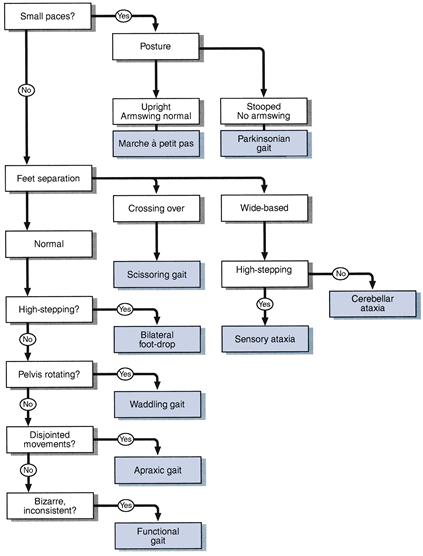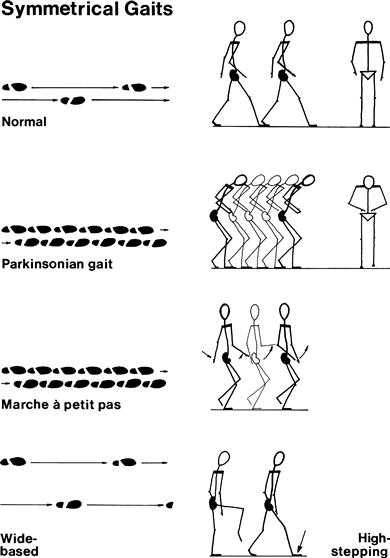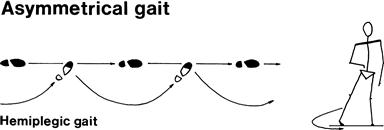Gait
BACKGROUND
Always examine the patient’s gait. It is a coordinated action requiring integration of sensory and motor functions. The gait may be the only abnormality on examination, or it may lead you to seek appropriate clinical associations on the rest of the examination. The most commonly seen are: hemiplegic, parkinsonian, marche à petits pas, ataxic and unsteady gaits.
Romberg’s test is conveniently performed after examining the gait. This is a simple test primarily of joint position sense.
WHAT TO DO AND WHAT YOU FIND
Ask the patient to walk.
Is the gait symmetrical?
(Gaits can usually be divided into symmetrical and asymmetrical even though the symmetry is not perfect.)
If symmetrical
Look at the size of paces:
If small paces:
Look at the posture and arm–swing:
If normal paces:
Look at the lateral distance between the feet:
Look at the knees:
Look at the pelvis and shoulders:
• Normal.







